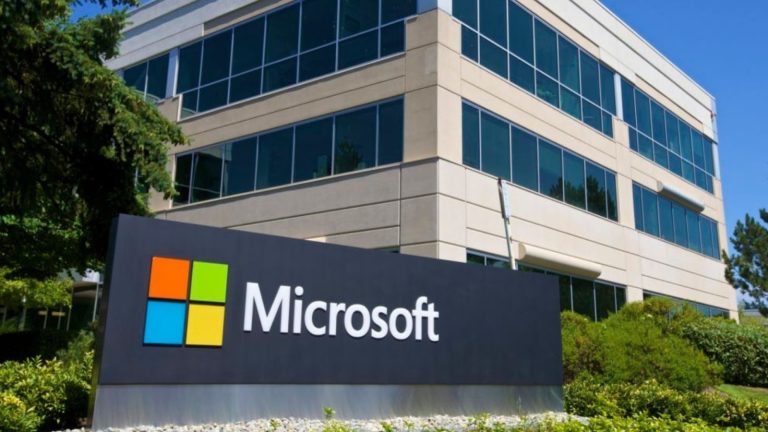|
Listen to this story
|
At Microsoft’s Ignite conference, CEO Satya Nadella opened a window into the future, revealing the tech giant’s ambitious journey into quantum computing. He emphasised the fusion of quantum computing and AI through Azure Quantum Elements, streamlining simulations by reducing the search space.
“In fact, we built a new model architecture called Graphormers for this very purpose,” Nadella revealed. Saying that it is meant to emulate complex natural phenomena, and much like large models generating text, Graphormers can generate entirely novel chemical compounds, an unimaginable feat for classical computers. It forecasts a compression of 250 years of chemistry and material science progress into a mere 25 years illustrating the transformative power of AI in expediting scientific progress.
It has been available in private preview since June 30 and delivers that speed through proprietary software tailored to the needs of chemical and materials scientists and built on Microsoft’s investments in AI, HPC and future quantum technologies, he said.
Bridging the Gap Between Science and Innovation
Azure Quantum Elements has demonstrated its prowess through astounding efficiency gains. Nadella presented a case where what previously took three years through traditional methods now materialises in just 9 hours, leveraging quantum elements within a Python notebook. This acceleration heralds a new era, empowering scientists with Copilot, a tool to navigate results swiftly and effectively, further catalysing innovation.
This innovation aims to empower researchers to explore the realm of molecular possibilities, accelerating breakthroughs in chemistry that impact over 96% of manufactured goods.
The chemical and materials industries spend many tens of billions of dollars in R&D and the belief is that through the use of advanced HPC, quantum computing, and AI this R&D can become significantly more efficient and help companies develop new products more quickly and at a lower cost.
For that very reason, NobleAI—A company which uses AI to deliver actionable insights and reliable predictions to accelerate development and reduce costs of developing new chemicals, materials, and formulations is one of the early users of Microsoft Quantum Elements.
Microsoft has also said that the system has helped some customers speed up their development processes by as much as six months. Microsoft said that BASF, AkzoNobel, AspenTech, Johnson Matthey, SCGC and 1910 Genetics have been testing the system.
Industry leaders BASF and Johnson Matthey have also embraced this paradigm shift, lauding its potential to expedite research approaches and increase efficiency, particularly in sustainable technologies.
The integration of Azure Quantum Elements into Azure’s HPC cloud has enabled Johnson Matthey to accelerate quantum chemistry calculations, unlocking a new frontier for atomic-level predictions. Microsoft’s collaboration with Photonic further reinforces its commitment to a quantum future, offering invaluable tools and insights for tomorrow’s scaled quantum computers.
Moreover, Nadella emphasised the democratising impact, enabling global scientists to design unique molecules for sustainable chemicals, advanced materials, and more. But this is just the beginning. Microsoft’s strides in quantum computing promise to accelerate simulations, and position them at the forefront of a quantum revolution within the Azure ecosystem.
BASF researchers led by Michael Kuehn and Davide Vodola, also use quantum algorithms to examine NTA compound attributes for wastewater treatment using GPUs, achieving a significant leap with 60 qubit simulations on NVIDIA’s Eos H100 Supercomputer using NVIDIA CUDA Quantum, allowing complex quantum circuit simulations with ease.
Elsewhere, CUDA Quantum empowers SUNY Stony Brook’s high-energy physics simulations and Hewlett Packard Labs’ exploration of magnetic phase transitions in quantum chemistry. Additionally, Oxford Quantum Circuits, Quantum Machines, qBraid, and Fermioniq utilise NVIDIA’s Grace Hopper Superchips for quantum endeavours, emphasising the superchips’ ample memory and bandwidth for memory-intensive quantum simulations. These high-performance classical simulations supplement the advancement of quantum computing, revealing intricate physical processes.
Photonic & Microsoft Paving Way for Quantum Networking
Another major announcement was the partnership between Photonic Inc. and Microsoft to pioneer quantum networking capabilities using photonically linked silicon spin qubits. This collaboration aims to enable reliable quantum communications over extended distances, integrating Photonic’s quantum computing expertise with Microsoft Azure Quantum Elements.
The collaboration outlines a roadmap for achieving entanglement between separate quantum devices, developing quantum repeaters, and ultimately delivering a fault-tolerant quantum repeater integrated with Azure cloud services. Photonic’s silicon-based architecture using colour centres and telecom band photons enables computing, networking, and memory functionalities, promising efficient quantum error correction codes.
Stephanie Simmons, Photonic’s founder, anticipates offering scalable and fault-tolerant quantum computing solutions within five years. With significant investments and a commitment to global expansion, Photonic aims to revolutionise digital security, climate modelling, materials development, and pharmaceuticals through quantum computing.
Microsoft’s collaboration with Photonic promises groundbreaking applications and discoveries in various fields, further solidifying its commitment to quantum networking and computing on the Azure platform.



















































































